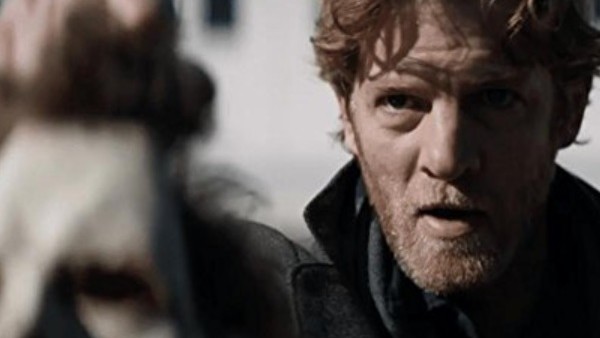Why Halloween (2018) Is Scarier Than You Think
3. 40 Years, Dwelling On Only One Thing...

Which brings us (perhaps belatedly) to David Gordon Green's Halloween. Taking place 40 years after the Babysitter Murders (a clever callback to Halloween's original working title), the film sees Michael Myers return to Haddonfield for one more night, with a now traumatised Laurie Strode determined to do what Loomis couldn't, and kill The Shape for good.
Halloween borrows plenty of different elements from the franchise's sequels, but most comparisons seem to reference Halloween: H20, the first of the franchise's sequels that decided to do away with previous continuity and start afresh. The difference now, however, is that this new Halloween has dropped the familicide angle entirely, restoring Michael to his true, terrifying and motive-less self. This places 'the night he came home' in a completely different context, and positions Laurie as a victim of happenstance, rather than as the intended target of Michael's sibling bloodlust.
The most fascinating thing about the new movie, however, is that it appears as though the murder of Judith Myers no longer takes primacy in Michael's memories. Whereas before he was acting on childhood instinct, now he's reliving the memory of 1978. Of course he reacts to Doctor Sartain's utterance of Judith, but the interaction Michael has with Oscar (Drew Scheid) underneath the motion-sensor lights clues us in on where the character currently is - at least tacitly.
Oscar, in a drunken stupor - and believing that Michael is actually just an upset neighbour - asks him one question: "have you ever known one girl you couldn't have?" This is a pretty blatant reference to Laurie, the sole survivor of the 1978 murders, and though this is about as close to a motive as we can ascribe to Michael's return, all his victims - bar perhaps the journalists in possession of his ghostly mask - are also victims of happenstance, just as Laurie and her friends were 40 years earlier.
That's what makes this new film so terrifying. Michael's no longer reliving a childhood memory, but instead the murders of 1978. The senseless nature of his violence is exemplified through that opening tracking shot, where he moves from building to building, and the lack of pause - whether to stalk or observe - is thoroughly disquieting.